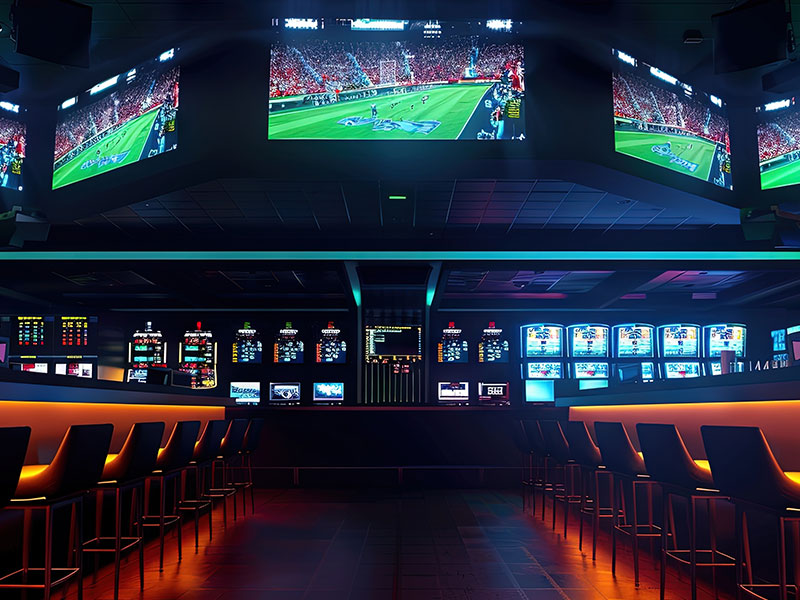Technology is changing the sports world and transforming experiences for everyone.
Key takeaways
Team-, player- and fan-focused tech is helping organizations capitalize on global sports demand.
Companies embracing technology need to assess cybersecurity threats and data privacy issues.
With the sports industry currently generating $159 billion in global revenue, there’s no shortage of opportunities to capitalize on the insatiable demand for all types of sports engagement for participants and spectators alike. The technology industry and startup world have certainly taken notice, with entrepreneurs building new and innovative products worldwide to capitalize on the global demand.
Here are some areas where technology is changing the sports world and transforming experiences for everyone, from the youngest fans to the richest owners.
Team-focused tech
Technology has revolutionized sports teams’ front offices, improving team performance and franchise financial performance. Teams have made significant strides to improve team performance by conducting rigorous data collection and analysis on players, the team and even stadium performance. Front offices should ensure proper data analytics tools like Tableau are set to aggregate and present data effectively, freeing teams to focus on analyzing and cutting data to discover key insights.
Accounting and finance teams should also ensure the right configuration of enterprise resource planning software such as NetSuite and Sage Intacct. These all-in-one ERPs continue to add additional modules and capabilities, including artificial intelligence, giving CFOs and finance teams better insight into operations. Owners can also leverage technology to manage their teams effectively, as well as other investments, providing family offices with the right tools to grow their portfolios around their flagship franchises.
Player-focused tech
Wearable technology is not new, but evolving applications have enhanced the performance of professional and amateur athletes. Wearables now provide insights well beyond simple heart rate monitors and geolocation technologies, like sensors in ski shoes or foot-to-ball interactions for soccer players. Virtual reality simulators can uncover key changes in swing angles for golfers and baseball players, for instance, while the NFL has used shock absorption sensors to improve football helmet safety.
With the youth sports industry already worth $30 billion and continuing to grow, these technologies are finding new audiences for tracking youth player performance. Startups have even designed software to manage youth sports leagues, engage trainers in person or virtually and engage professional teams looking to scout the best youth talent worldwide.
Startups should ensure they comply with regulations related to personal health data and have protections in place to guard against other cyber risks.
Fan-focused tech
With fan engagement at an all-time high, innovation is unlocking new opportunities to improve the fan experience at events and at home. Companies can use on-screen analytics and connected delivery platforms to enhance sports TV programming. Concurrent with these enhancements, the largest tech companies are seeking to expand their media offerings, targeting sports fans with high engagement and loyalty. Moreover, sports betting has continued to grow, with numerous apps offering in-game, micro-betting or daily fantasy sports leagues.
In-person events are being transformed by the creation of smart stadiums, which integrate sensors, cameras, and IoT technologies to enhance the fan experience. The smart stadium market is expected to grow by 20.6% annually to $29.39 billion in revenue from 2023 to 2030, according to Grand View Research. Digital content management enhances the visuals for the fans, with cell phones and even wearables offering the potential for immersive experiences within the event. These technologies can also make it easier for advertisers to engage fans with their products in unique ways, tailoring the stadium experience. With increased wireless connectivity, fans use their smartphones to share their experiences with others in the stadium and around the world, creating a fusion of the physical and digital fan base.
Companies embracing technology for the fan experience should ensure smart stadium solutions are not only secure from cybersecurity threats, but are also designed to handle the increased digital connectivity, with sufficient bandwidth for public safety, crowd management, on-premise security coordination, and digital signage solutions. Companies should also evaluate the environmental and operational efficiencies gained from automated energy management systems, which can provide significant benefits for temperature control and environmental compliance.
The takeaway
Technology is transforming the sports experience for athletes, fans, franchises and broadcasters. Stakeholders need to assess how to integrate these technologies while also being mindful of implications related to data privacy, cybersecurity, digital infrastructure and compliance with various regulations. As these technologies continue to mature, sports will become a more connected and advanced experience from the little league field to the largest stadiums in the world.



